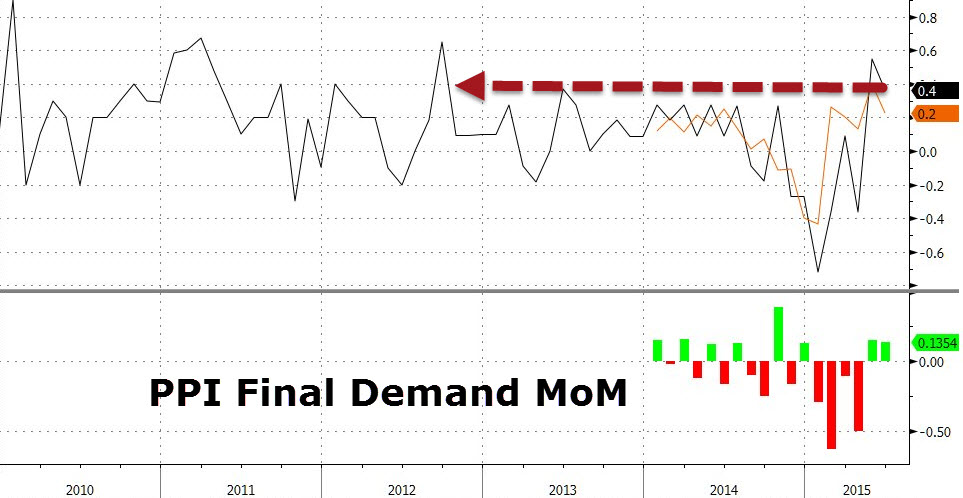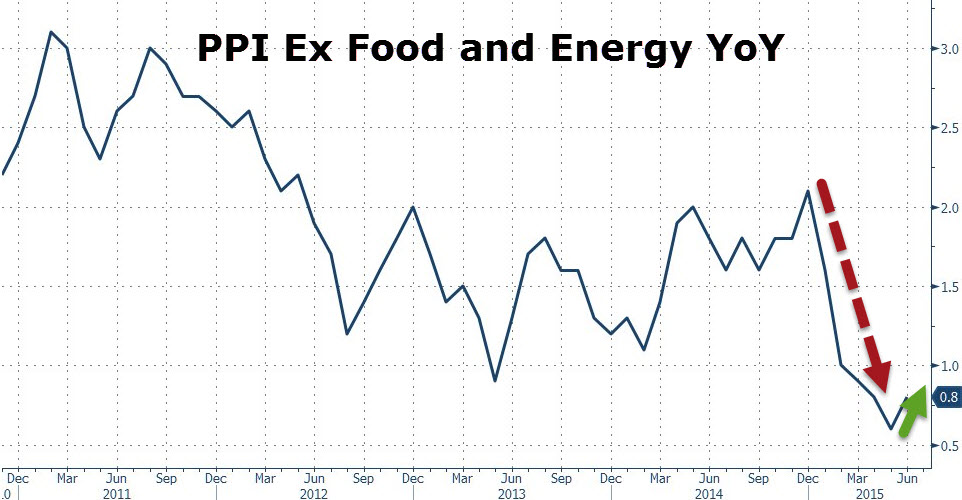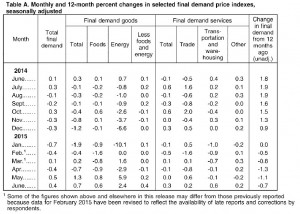US producer prices rose for the month of June, comfortably beating analyst expectations and rising by the fastest pace in nearly three years according to data just release by the Bureau of Labor and Statistics. Surging prices for gasoline helped lift input prices across the board, and may signal the deflationary spiral which has been affecting both the consumer and producer markets for several months may be finally beginning to abate. The BLS reported producer price index for final demand increased 0.4 percent versus analyst expectation of 0.2%, and a print of 0.5% last month. The latest data builds on gains from May, and will be a welcome waypoint for those concerned about deflation taking root within the economy, although with economic tensions on the increase globally, it appears to soon to call victory in this regard.
Rising Gasoline Prices Continue to Push Prices Higher
Rising gasoline prices, which rose 4.3 percent in June, accounted for nearly thirty percent of this month’s increase in prices for final demand goods. June marks the second month of surging gas prices following a 17 percent increase in May. The price of food input costs also rose, with the price of eggs in particular remaining elevated due to the bird flu outbreak which has led to a drastic cut in supply across the United States. Food prices rose 0.6 percent with wholesale eggs soaring 84.5%.
Yellen Reiterates the Fed’s Desire to Raise Rates
Elsewhere on the inflation related front, Fed Chairwoman Janet Yellen appeared before the House Financial Services Committee in Washington and reiterated the Fed’s intention to raise rates should the economy continue to “evolve as expected” in the coming months. In her statement Yellen went onto say that she expected growth to “strengthen over the remainder of this year and the unemployment rate to decline gradually”. The Fed has made no secret that any rate increase will be highly dependent on supporting data – most of which has been conflicting at best in recent months.
Yellen’s comments may fall on increasingly sceptical ears within the market, as a combination of increasingly disruptive forces worldwide begin fusing themselves into the perfect financial storm. Ongoing turmoil and potential contagion within Greece is likely to suppress European economic activity for the rest of the year as politicians lurch from one unworkable scenario to the next. China is also beginning to spark real concern amongst investors and could trigger a worldwide slowdown in the months ahead.
Canada throws in the Towel
The knock on effects from China are already being felt, with the Bank of Canada unexpectedly slashing its GDP target from 1.9% to 1.1%. Second quarter GDP in particular was axed from 1.8% to -0.5%. In what could be the first signs from a western central bank of just how bad things are becoming globally. As part of the announcement the Bank of Canada cut benchmark interest rates to 0.5% – a record low.  The BOC cited collapsing investment in the oil and gas sector as one of the main drivers of the slowdown, with investment forecast to shrink by up to 40% this year alone.
The BOC cited collapsing investment in the oil and gas sector as one of the main drivers of the slowdown, with investment forecast to shrink by up to 40% this year alone.
With Canada just a hop, skip and a jump away from the US border – the difficulty facing the Fed going forward is clear – they simply cannot raise rates when the rest of the world is attempting to ease. The results will be a full on run on most commodity and emerging market currencies.
CPI Preview for June
Consumer prices are expected to follow producer prices higher when they are announced on Friday – with rebounding food and energy costs likely to boost overall prices for the average American household. Headline inflation is forecast to increase 0.3% month on month, with core inflation expected to post a similar increase of 0.2%. Prices overall are likely to have increased 0.1% on an annualized basis, which if correct, would be an important psychological barrier to overcome as year on year data has been negative or flat throughout 2015. Core inflation will be the watched closely, with the market forecasting an increase of 1.8% on an annualized basis.
Regardless of the number on Friday, it is becoming increasingly obvious that conventional monetary policy is running out of steam and markets are not likely to be happy.






